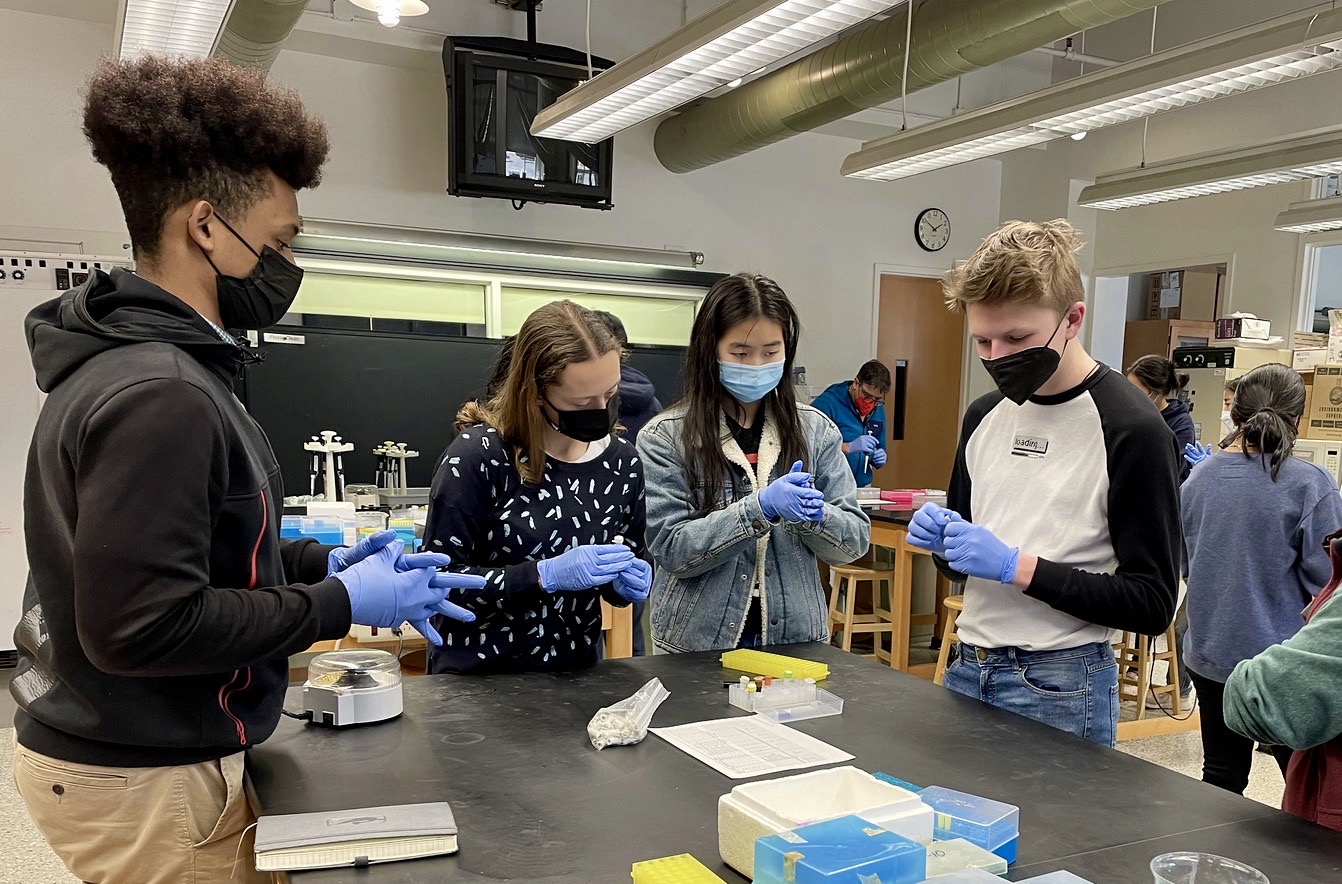Friday, April 25
Clark Leads New DNA Research Extracurricular
Nichole Jin '24 in News | April 1, 2022

As a co-curricular activity this Winter Term, Science Teacher John Clark P’20 ’22 led a research team made up of Lawrentians that examined the discovery of a variety of new plant species in the New World Tropics. He led this year-long organismal evolutionary biology program to give Lawrenceville students from all Forms with an interest in botany a chance to examine DNA samples. Clark said, “We are still working through data, but our goal is better to understand the evolutionary history (phylogeny) of flower shapes in Gasteranthus.”
Nikita Coppisetti ’22, a participant in the program, said, “It was so exciting to me that many of the samples were new species. With DNA sequencing, we would be able to find what other species [the plants] are most closely evolutionarily related to.”
Gwyneth Deng ’25, another student who participated in the cocurricular, was initially interested in the program because she had “never done any DNA sequencing before, so [she] felt [that] this extracurricular [would] be a great opportunity to try something new and interesting.” Her passion for biology motivated her to participate in the program. While she was “not familiar with any of the equipment” that they used at first, Deng quickly became more comfortable working in the lab after a couple of hands-on trials under the guidance of Clark and Lab Assistant Valerie Stuermer. “Not only did I learn more about DNA sequencing techniques, biodiversity, and organismal evolutionary biology,” Deng said, “but I also had a really enjoyable time with my peers and teachers.”
To examine and analyze the plant DNA in the lab, the students first have to run a polymerase chain reaction to make copies of the DNA. Coppisetti explained that “after the reaction is complete, [students] run gel electrophoresis, which separates the DNA fragments based on the size of the molecule. Here, [students] can visualize the DNA to confirm that [they] have amplified the correct region of DNA, the internal transcribed spacer.” Clark then sends the DNA to a different lab where they can retrieve the actual sequence. The results are then analyzed by creating phylogenetic trees to display the connections between each sample and their relation to other species.
According to Deng, this work was done in four separate groups, with students in each group using “pipettes to mix different solutions in different quantities together.” The DNA samples were then added to these solutions and examined.
“I’ve done this co-curricular for a couple of years now and gained so much experience working in a lab and with the equipment,” said Coppisetti, who has been interested in both the field of molecular biology and Clark’s co-curricular since she was a II Former. Reflecting on her growth from her first year here, she continued by saying, “One of my favorite parts in the co-curricular now is seeing the younger students learn and have ‘aha moments,’ because I remember when I was in their place not long ago.”
Aside from the extracurricular, Dr. Clark has been conducting extensive research in plant biodiversity for decades. Specifically, he studies historical plant specimens, ranging from Humboldt’s collections at the Paris Museum to recently collected samples in Latin America. He has also investigated plant samples from other major museums such as The National Museum of Natural History, Selby Botanical Gardens, and The Royal Botanic Garden Edinburgh. The subject of his doctoral dissertation research had to do with significant discoveries from “the convergence and evolutionary diversification of flower shapes.” Dr. Clark has always been interested in plant biology and believes it to be an important field, saying, “I think it’s essential for our community to appreciate our natural surroundings—a passion for nature starts with recognizing biodiversity. I also believe that science is vital to promoting the conservation of rapidly disappearing forests.”
Related Articles
- Announcing: Valedictorian, Aurelian Speakers, and Faculty Speaker Sophie Liu ’27
- Welcoming Our New VPs for 2025-2026 Sophie Liu ’27
- Leo Min Takes the Win: The 2025-26 Student Body President Presents to You...ZUMBA Sophie Liu ’27
- Farewell to the V Formers of The Lawrence CXLIV Sophie Liu ’27
- Black History Month: Afrofest & Panels Angel Xin ’26 and Dorothy Lee ’26
Recent Articles
- Announcing: Valedictorian, Aurelian Speakers, and Faculty Speaker Sophie Liu ’27
- Senior Profile: Sophie Cheng ’25 Katherine Qiu ’27
- Debunking the Dining Hall Debate: Is Lawrenceville’s Dining Really That Bad? Isabelle Lee ’27
- Welcoming Our New VPs for 2025-2026 Sophie Liu ’27
- A Sweet Return: Melba Reopens with New Flavors and Community Spirit Ella Song ’27